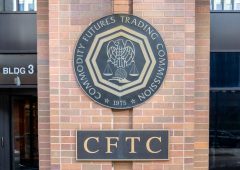Billionaire Compares Bitcoin’s Financial Revolution to Netflix’s Legacy
08.01.2025 9:00 1 min. read Kosta Gushterov
Bitcoin’s meteoric rise in 2024 has sparked comparisons to transformative technologies of the past, with venture capitalist Tim Draper likening it to Netflix’s disruption of the entertainment industry.
Draper suggests that Bitcoin, much like Netflix, is revolutionizing its field by challenging traditional systems and redefining the norms of finance.
Netflix’s ascent from a struggling DVD rental service to a $380 billion streaming giant is a hallmark of innovation, leaving competitors behind as it embraced new technology. Draper sees Bitcoin following a similar path, with its decentralized model set to overhaul the outdated and costly systems of traditional finance. At a current price of $101,000 and a market cap near $2 trillion, Bitcoin’s growing adoption signals its potential to reshape the financial landscape.
Draper describes this shift as a “Bitcoin vs. Banks” moment, where digital assets stand to displace centralized institutions, just as Netflix overtook Blockbuster. Industry leaders like Michael Saylor share Draper’s vision, viewing Bitcoin as a solution to economic challenges like U.S. debt and a cornerstone of the future financial system.
Analysts predict Bitcoin could reach $225,000 by 2025, with even more ambitious forecasts in the years ahead. Draper, who has previously suggested Bitcoin could eventually hit $3 million per coin, sees the cryptocurrency as a pioneer, much like Netflix was for media, ready to lead a new era of financial innovation.
-
1
Strategy Claims It Can Weather a Bitcoin Crash to $20K Without Trouble
16.07.2025 14:08 1 min. read -
2
Peter Schiff Warns of Dollar Collapse, Questions Bitcoin Scarcity Model
12.07.2025 20:00 1 min. read -
3
Corporate Bitcoin Adoption Soars: 125 Public Companies Now Hold BTC
16.07.2025 20:00 2 min. read -
4
Bitcoin ETFs See $1B Inflow as IBIT Smashes Global AUM record
11.07.2025 21:00 1 min. read -
5
Bitcoin Reaches $119,000 Milestone as Corporate Demand and ETF Inflows Rise
13.07.2025 17:45 2 min. read
Where Is The Smart Entry Point For Bitcoin Bulls?
With Bitcoin hovering near $119,000, traders are weighing their next move carefully. The question dominating the market now is simple: Buy the dip or wait for a cleaner setup?
Matrixport Warns of Bitcoin Dip After Hitting This Target
Bitcoin has officially reached the $116,000 milestone, a level previously forecasted by crypto services firm Matrixport using its proprietary seasonal modeling.
Bitcoin Risk Cycle Flips Again as Market Enters Safer Zone
Bitcoin’s market signal has officially shifted back into a low-risk phase, according to a new chart shared by Bitcoin Vector in collaboration with Glassnode and Swissblock.
Robert Kiyosaki Warns of 1929-Style Crash, Urges Bitcoin Hedge
Financial author Robert Kiyosaki is once again sounding the alarm on America’s economic health.
-
1
Strategy Claims It Can Weather a Bitcoin Crash to $20K Without Trouble
16.07.2025 14:08 1 min. read -
2
Peter Schiff Warns of Dollar Collapse, Questions Bitcoin Scarcity Model
12.07.2025 20:00 1 min. read -
3
Corporate Bitcoin Adoption Soars: 125 Public Companies Now Hold BTC
16.07.2025 20:00 2 min. read -
4
Bitcoin ETFs See $1B Inflow as IBIT Smashes Global AUM record
11.07.2025 21:00 1 min. read -
5
Bitcoin Reaches $119,000 Milestone as Corporate Demand and ETF Inflows Rise
13.07.2025 17:45 2 min. read


